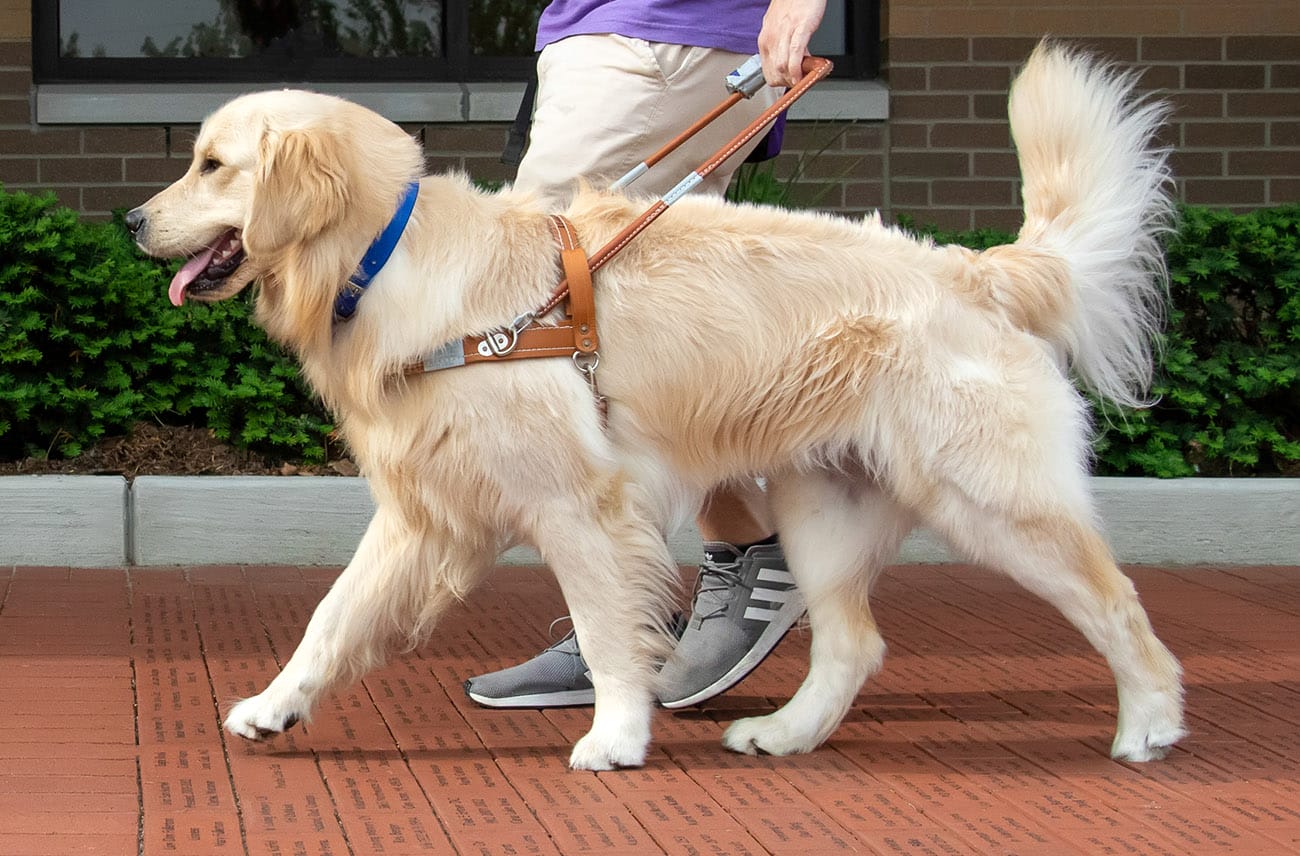
We have held the first in a series of webinars that will provide answers to some of the questions we receive most often about the services we provide. Webinars will be held quarterly (January, April, July, October).
Our first webinar tackled the topic: “Is a Leader Dog the Right Mobility Tool for Me?” Two professionals from our training team, Manager of Extended Services Erica Ihrke, certified orientation and mobility specialist, and Director of Programs David Locklin, guide dog mobility instructor, presented. They gave insight into the similarities/differences of using a cane vs. a guide dog, overviewed admission standards for both our Orientation & Mobility (O&M) Training and Guide Dog Training programs, and covered the application process for both programs, among other topics.
We had a great response to the webinar and are making it available for everyone to review on YouTube.
There were requests to include some of the content discussed in the webinar including International Guide Dog Federation standards and information for O&M professionals about our Pro Seminars.
If you would like to be notified of future webinars, please email Rachelle Kniffen with your request.
Meet Your Host and Presenters
Erica Ihrke has been Leader Dog’s manager of extended services since 2008. She earned her master’s degree in orientation and mobility from Western Michigan University. She is currently a member of the O&M Subject Matter Expert Committee for the Academy for Certification of Vision Rehabilitation & Education Professionals and is a past president of Michigan Association for Education and Rehabilitation of the Blind and Visually Impaired (AER).
Erica is an in-demand speaker and has presented at several AER International Conferences and the International Mobility Conference on the topics of guide dog readiness, alternative models of O&M, and accessible GPS.
David Locklin has 17 years experience in guide dog training. His career started with Guide Dogs for the Blind in the United Kingdom where he was a guide dog mobility instructor for seven years before becoming their service delivery manager.
Since 2014, David has been Leader Dog’s director of programs, overseeing the training department and the outreach services & community engagement department. Among David’s responsibilities is ensuring that all programs meet International Guide Dog Federation standards and that the needs of all clients are being met.
Jim Dugan, Leader Dog’s manager of outreach services, has been with Leader Dog since 2016. He oversees client field activities including home delivery of Leader Dogs and client support, as well as agencies and community engagement activities.
Jim has been in the guide dog industry since 1989 and has been a guide dog mobility instructor since 1992 for organizations in the U.S. and Australia. Prior to that, Jim was a member of the Military Police K9 Corp. in the U.S. Army.

